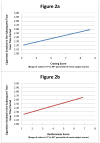Within-day temporal patterns of smoking, withdrawal symptoms, and craving
- PMID: 21324611
- PMCID: PMC3123683
- DOI: 10.1016/j.drugalcdep.2010.12.027
Within-day temporal patterns of smoking, withdrawal symptoms, and craving
Abstract
We examined the temporal relationships between smoking frequency and craving and withdrawal. 351 heavy smokers (≥15 cigarettes per day) used ecological momentary assessment and electronic diaries to track smoking, craving, negative affect, arousal, restlessness, and attention disturbance in real time over 16 days. The waking day was divided into 8 2-h "bins" during which cigarette counts and mean levels of craving and withdrawal were computed. Cross-sectional analyses showed no association between restlessness and smoking, and arousal and smoking, but craving (b=0.65, p<0.01) was positively associated, and negative affect (b=-0.20, p<0.01), and attention disturbance (b=-0.24, p<0.01) were inversely associated with smoking. In prospective lagged analyses, higher craving predicted more subsequent smoking and higher smoking predicted lower craving (p's<0.01). Higher restlessness also predicted more subsequent smoking and higher smoking predicted lower restlessness (p's<0.01). Higher negative affect did not predict later smoking, but more smoking preceded lower negative affect (p<0.01). Neither attention disturbance nor arousal predicted, or were predicted by variations in smoking. In short, smoking exhibits time-lagged, reciprocal relationships with craving and restlessness, and a one-way predictive relationship with negative affect. Temporal patterns of craving and restlessness may aid in the design of smoking cessation interventions.
Copyright © 2011 Elsevier Ireland Ltd. All rights reserved.
Figures


References
-
- American Psychiatric Association . Diagnostic and Statistical Manual of Mental Health Disorders. Fourth. Washington, DC: 2000. Text Revision.
-
- Baker TB, Piper ME, McCarthy DE, Majeskie MR, Fiore MC. Addiction motivation reformulated: an affective processing model of negative reinforcement. Psychol Rev. 2004;111:33–51. - PubMed
-
- Benowitz NL. Clinical pharmacology of nicotine: implications for understanding, preventing, and treating tobacco addition. Clin Pharmacol Ther. 2008;83:531–541. - PubMed
-
- Chandra S, Shiffman S, Scharf DM, Dang Q, Shadel WG. Daily smoking patterns, their determinants, and implications for quitting. Exp Clin Psychopharmacol. 2007;15:67–80. - PubMed
Publication types
MeSH terms
Substances
Grants and funding
LinkOut - more resources
Full Text Sources
Medical

